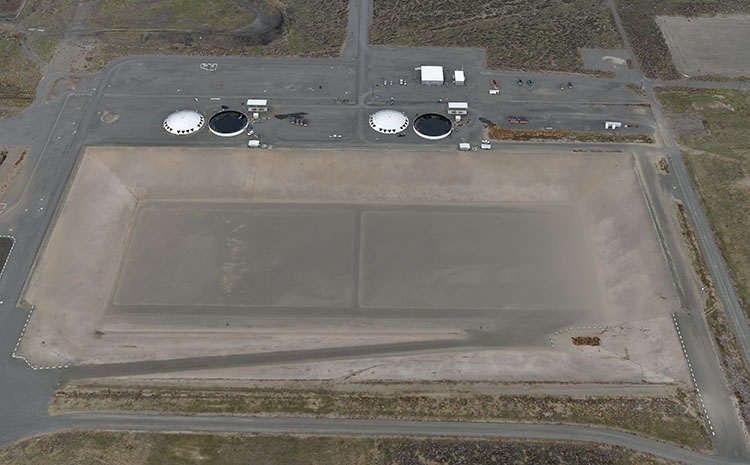
In a Federal Register notice Tuesday, the Department of Energy said that glass logs produced from low-level radioactive tank waste at the Hanford Site in Washington state can be treated as low-level waste.
DOE published that conclusion after consulting with the Nuclear Regulatory Commission, tribes and other local stakeholders in the final “Waste Incidental to Reprocessing Evaluation for Vitrified Low Activity Waste and Secondary Wastes at the Hanford Site.”
The determination applies only to the less-radioactive liquid waste, called low-activity waste, that Hanford plans to begin solidifying between 2023 and 2025 during the Direct Feed Low-Activity Waste phase of the Waste Treatment and Immobilization Plant. DOE is tackling disposal of the site’s more radioactive high-level waste separately.
The Waste Incidental to Reprocessing evaluation has taken years and predates DOE’s initiative to reconsider treatment options for high-level radioactive waste that started during the Donald Trump administration, according to DOE.
“This determination is not relabeling, renaming, recharacterizing or reclassifying waste,” according to a DOE fact sheet provided to Exchange Monitor through a DOE spokesperson.
The notice in Tuesday’s Federal Register applies to roughly 23.5 million gallons of low-level waste taken from various Hanford underground tanks. It also applies to secondary wastes, liquid or solid. These are wastes created in the course of retrieving and treating tank waste, not the tank waste itself, the spokesperson said.
The ruling was “expected and necessary,” a spokesperson for the Washington Department of Ecology said in an email. This will allow disposal of the glass cylinders made by the vit plant in “near-surface facilities” rather than a deep underground repository, akin to the proposed Yucca Mountain site in Nevada.
“DOE is using the paths expected by the state, and not the high-level waste redefinition,” the state spokesperson said. The process “shows Hanford’s nuclear tank waste can be appropriately reclassified through an established regulatory process,” the state spokesperson said.
In the Waste Incidental to Reprocessing finding, and a related notice on secondary waste also published Tuesday, DOE envisions using an out-of-state disposal site, Waste Control Specialists’ in Texas, for disposal. DOE will also use Hanford’s Integrated Disposal Facility for that purpose, the state spokesperson said.
The second notice updates a 2013 National Environmental Policy Act decision on secondary waste. Secondary waste is a category that includes both liquid wastes, such as process condensates, scrubber wastes and spent reagents from resins, and solid wastes such as worn filter membranes and high-efficiency particulate air filters, the DOE spokesperson said in an email to Exchange Monitor.
Much of this secondary will be grouted offsite at either Perma-Fix Northwest plant in Richland near Hanford; another Perma-Fix facility in Tennessee; or Waste Control Specialists near Andrews, Texas, depending on the waste, the DOE spokesperson said.
Glass-making at the Waste Treatment and Immobilization Plant’s Direct Feed Low-Activity Waste facilities is expected to begin between 2023 and 2025.
Roughly 350 cubic meters annually of secondary waste are expected to be both treated and disposed of offsite during the upcoming direct feed low-activity waste campaign, according to the notice. The offsite disposal volume, following treatment, will be about 580 cubic meters annually for an approximate total of 5,800 cubic meters over 10 years after startup of vitrification. Secondary waste created after the first 10 years of low-activity waste processing will go to the Integrated Disposal Facility at Hanford.